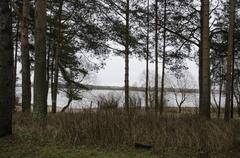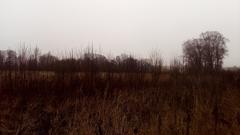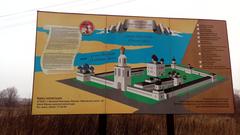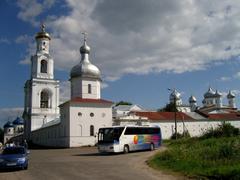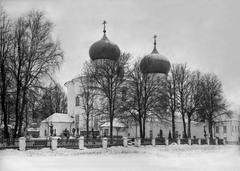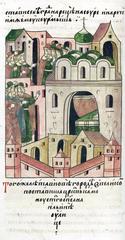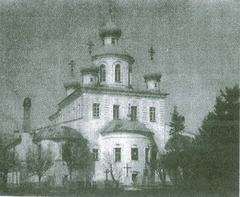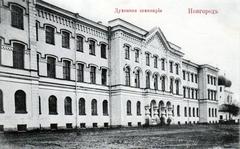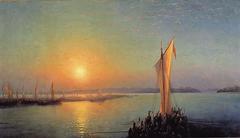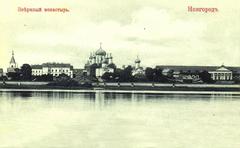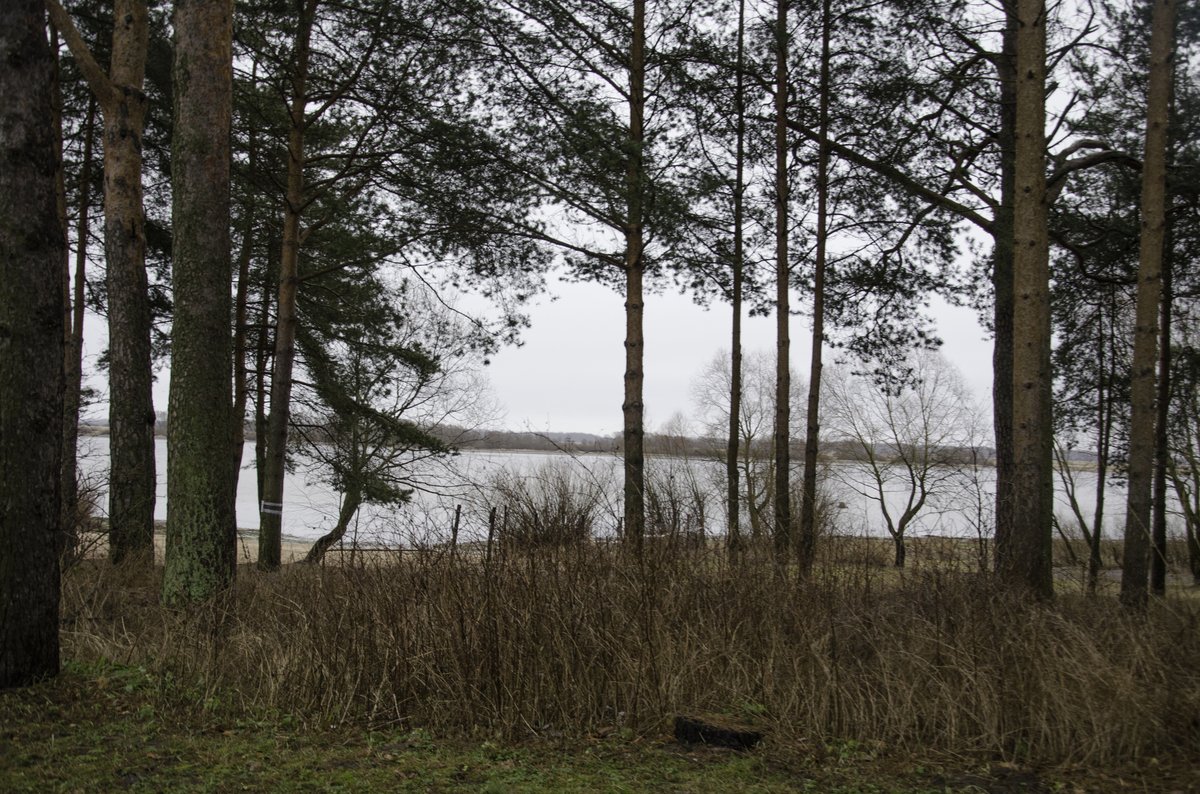
Yuriev Monastery Visiting Hours, Tickets, and Veliky Novgorod Historical Sites Guide
Date: 14/06/2025
Introduction: The Spiritual and Cultural Heart of Veliky Novgorod
On the tranquil left bank of the Volkhov River, about 5 kilometers south of Veliky Novgorod, stands Yuriev Monastery—also known as St. George’s Monastery—one of Russia’s oldest and most revered religious sites. Its origins, entwined with legend and history, trace back to the early Christianization of the Kievan Rus’. Traditionally founded in 1030 by Yaroslav the Wise, the confirmed establishment of the stone Cathedral of St. George in the early 12th century marked Yuriev Monastery as a centerpiece of Russian medieval spirituality and culture.
The monastery’s architectural splendor, rich artistic heritage, and continuous role in religious life make it a testament to the enduring Orthodox tradition. As part of the UNESCO World Heritage Site “Historic Monuments of Novgorod and Surroundings,” Yuriev Monastery is not only a spiritual center but also a living museum of Russian history, art, and faith (St. George’s (Yuriev) Monastery in Veliky Novgorod, Culture Tourist, Guide to Petersburg).
Table of Contents
- Early Foundations and Historical Significance
- Architectural Evolution and Artistic Legacy
- Yuriev Monastery in the Novgorod Republic
- Decline, Restoration, and Modern Revival
- Visiting Information: Hours, Tickets, Accessibility, and Tours
- Exploring the Monastic Complex
- Practical Visitor Tips
- Integration with Nearby Attractions
- Frequently Asked Questions (FAQ)
- Planning Your Visit
- References
Early Foundations and Historical Significance
According to tradition, Yuriev Monastery was founded in 1030 by Yaroslav the Wise, who was baptized as George (Yuriy). While this origin is legendary, documented history places the establishment of the stone Cathedral of St. George—its central structure—between 1119 and 1130, commissioned by Prince Vsevolod Mstislavich. This marks the monastery as one of the oldest stone ecclesiastical buildings in Russia, signifying a pivotal shift from wooden to monumental stone church construction.
Yuriev Monastery quickly became a spiritual and administrative nucleus, underpinning the Christianization of the region and acting as a center for religious, political, and cultural affairs.
Architectural Evolution and Artistic Legacy
The architectural style of Yuriev Monastery reflects early Russian Romanesque traditions. The Cathedral of St. George, attributed to Master Peter, features massive white limestone walls, three asymmetrical domes (an unusual configuration for its time), and a harmonious cross-in-square layout (novgorod.ru). Decorative cornices and tiers of windows break up the robust walls, filling the interior with natural light.
Inside, the cathedral once glowed with frescoes and icons, fragments of which survive as invaluable records of medieval Russian art. Notable icons such as the “St. George” (1030) and the “Yuriev Annunciation” (1130s) are attributed to the monastery and now reside in Moscow’s Tretyakov Gallery. Yuriev’s scriptorium was renowned for illuminated manuscripts, including the celebrated Yuriev Lectionary, pivotal in the development of Russian ecclesiastical literature.
Yuriev Monastery in the Novgorod Republic
Throughout the Middle Ages, the monastery played a crucial role in both church and state. It served as the seat of the archimandrite and hosted important ecclesiastical councils. The monks were not only spiritual leaders but also scholars, scribes, and advisors, reinforcing Yuriev’s central role in Novgorodian and Russian society.
The monastery’s landholdings and connections to the ruling elite ensured its economic strength and influence, while its religious significance was marked by major ceremonies—such as the annual blessing of the Volkhov River and city processions—that integrated it deeply into the city’s identity.
Decline, Restoration, and Modern Revival
Yuriev Monastery faced adversity during the Mongol invasions and periods of political turmoil, leading to decline in the 16th and 17th centuries. Restoration efforts in the 18th and 19th centuries, supported by the Orthodox Church and imperial authorities, preserved its historical fabric.
The Soviet era brought closure and secularization, but the monastery was protected as a cultural monument. Since the 1990s, extensive restoration has revitalized Yuriev as an active monastic community and a major pilgrimage and tourist destination.
Visiting Information: Hours, Tickets, Accessibility, and Tours
Opening Hours:
- Summer (June–August): 9:00 AM to 6:00 PM
- Spring/Fall: 10:00 AM to 6:00 PM
- Last admission: 30 minutes before closing
- Hours may vary on Orthodox holidays; check ahead (TravelSetu).
Tickets:
- Entry to monastery grounds: Free
- Access to the Cathedral of St. George and museum exhibits: 200–400 RUB (adults), discounts for students/seniors, children under 12: free
- Tickets available at the entrance and via the official tourism website
Guided Tours:
- Conducted in Russian and English; advance booking recommended during peak seasons
- Tours offer historical, architectural, and religious insights
Accessibility:
- Ramps and designated pathways are available, but some historic structures feature uneven surfaces and steps; full wheelchair access may be limited
Travel Tips:
- Located 5 km from city center; reachable by taxi, bus, or scenic boat tours
- Allow 1–2 hours for a comprehensive visit
- Modest dress and respectful conduct are required, especially during services
Exploring the Monastic Complex
Key Structures:
- Cathedral of St. George (1119–1130): The heart of Yuriev Monastery, featuring three distinctive domes, impressive vaulting, and remnants of medieval frescoes
- Refectory and Bell Tower: Showcasing architectural styles from the 12th to 19th centuries
- Church of the Exaltation of the Cross: An example of later medieval construction
- Gardens and River Views: The monastery’s riverside setting offers tranquil landscapes and photo opportunities
Artistic Features:
- Surviving fresco fragments and icons provide insight into the Novgorodian school of art
- Manuscripts and archival materials illuminate the intellectual life of medieval Russia
Religious Life:
- Regular Orthodox services are open to visitors
- The annual St. George’s Day (April 23) features processions and festive liturgies
Practical Visitor Tips
- Restrooms and Cafés: Available near the entrance
- Souvenir Shops: Offer icons and local crafts
- Photography: Permitted outdoors and in most interiors without flash or tripods, except during services
- Safety: Monastery grounds are secure; follow posted guidelines
Integration with Nearby Attractions
Yuriev Monastery is ideally paired with other Veliky Novgorod historical sites:
- Novgorod Kremlin (Detinets): The city’s ancient fortress and administrative core
- Saint Sophia Cathedral: Oldest stone church in Russia
- Vitoslavlitsy Museum of Wooden Architecture: Showcasing traditional wooden buildings
- Yaroslav’s Court and Millennium of Russia Monument: Civic landmarks reflecting the city’s storied past
Combining these sites offers a comprehensive exploration of Novgorod’s heritage.
Frequently Asked Questions (FAQ)
Q: Is the monastery open year-round?
A: Yes, but hours vary; always check before visiting.
Q: Are tickets required for entry?
A: Grounds are free; certain exhibits and guided tours require tickets.
Q: Is it possible to attend services?
A: Yes, all visitors are welcome at Orthodox services.
Q: Is the site accessible for wheelchair users?
A: Partial access is available, but some areas have steps and uneven floors.
Q: Can I take photographs?
A: Photography is allowed in most areas, with restrictions during services.
Planning Your Visit
- Check the official website for up-to-date visiting hours, ticket details, and special events.
- Consider guided tours for deeper historical and religious context.
- Dress modestly and respect the monastery’s active religious community.
- Download the Audiala app for audio tours and cultural insights.
For an enriching journey through Russian history and Orthodox tradition, include Yuriev Monastery at the top of your Veliky Novgorod itinerary.
References
- St. George’s (Yuriev) Monastery in Veliky Novgorod: History, Visiting Hours, Tickets & Travel Tips, 2025
- Yuriev Monastery Visiting Hours, Tickets, and Architectural Highlights: A Complete Guide to Veliky Novgorod’s Historic Gem, 2025
- Yuriev Monastery: Exploring the Historical, Cultural, and Spiritual Heart of Veliky Novgorod – Visiting Hours, Tickets, and Travel Tips, 2025
- Yuriev Monastery Visiting Hours, Tickets & Guide | Veliky Novgorod Historical Sites, 2025
- UNESCO World Heritage Centre. Historic Monuments of Novgorod and Surroundings, 2025
